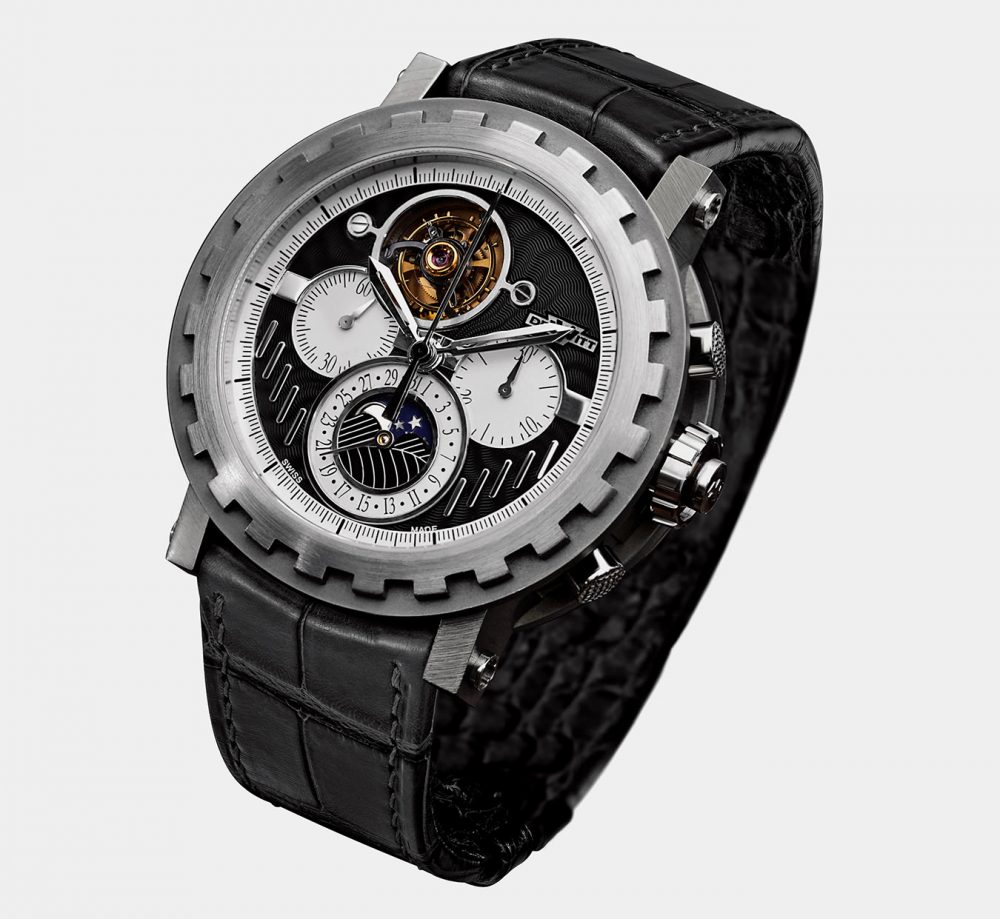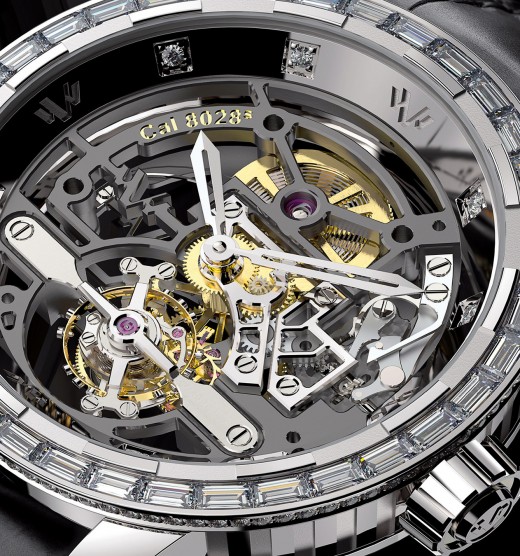You might reasonably expect the fifth-generation descendants of Napoleon Bonaparte to be intelligent, well mannered, and perhaps even a little creative. In the case of Jérôme Napoleon DeWitt, your expectations would likely be surpassed.
After a career in nurturing various businesses into prominence and stability, Mr. DeWitt decided it was time to enter the world of horology, and began production in 2003. The 80 employees eventually built the number of timepieces produced annually to approximately 1,500. He says, in his firm though somewhat soft-spoken way, “You need a goal, and when you have success, you owe it to the world to reinvest, to support another company. To give knowledge and passion, support, a vision to that company.”
He decided to enter the world of fine watches at the top end, and introduced the DeWitt Pressy Grande Complication at the 2003 BaselWorld fair. “I had no interest in a marketing product. ” he says. “The company remains independent, since we need to keep the quality and creativity at the highest level.” The DeWitt hallmark is the “imperial columns” component of the design, found in some form on every piece. The DeWitt Manufacture, located in the environs of Geneva, even creates its own dials in-house. Every watch is built, in its entirety, by a single master watchmaker.
That dedication is what makes such pieces as the Twenty-8-Eight Skeleton Tourbillon possible. Its 18-carat white gold wall provides intricate reflections of the skeleton movement. Thirty-six Baguette-cut and 104 brilliant-cut diamonds take this watch into another space, almost another time. It is all about balance, and beauty, ultimately.
The watches often feature multiple complications, and each bears the signature columns that Mr. DeWitt designed into the first Pressy. Other elements, such as the hint of an art deco building à la the Empire State Building, can be found in the various design manifestations of each watch. “I remember New York and those big buildings so clearly even today, from my first visit with my parents when I was nine years old, on my way to FAO Schwartz,” says Mr. DeWitt. “What we produce is from my dreams. Even the radiator grill of an antique automobile can be used.” These are all part of the brand’s unique charms, and part of the attraction for discerning collectors as well. “For me, it is knowledge—knowledge of material, and how it catches life, represents life.” It is not necessarily an easy thing, to translate dreams into the reality of a fine timepiece.
There have been many occasions when obstacles presented themselves, mostly in the form of a statement that a specific design was impossible to execute, usually on the grounds that it had never been done before. To which Mr. DeWitt invariably asked a simple question: “Why?” The process would go on from there.
These watches have, predictably, limited retail availability. “For retail, there is no checklist,” says Mr. DeWitt. “If it is right, I feel it. If something is wrong, even one small detail, I see it right away.” It is all part of his drive to make the brand the best of its kind, and to keep innovation firmly grounded in traditional knowledge as the hallmark of the company.
But there is a notable absence of pretension. Mr. DeWitt states his purposes clearly: “Without knowledge of the past, I cannot make a watch. And then, from these roots, the question, ‘How do we bring it into the modern world?’ ” He seems to have found the answer.











